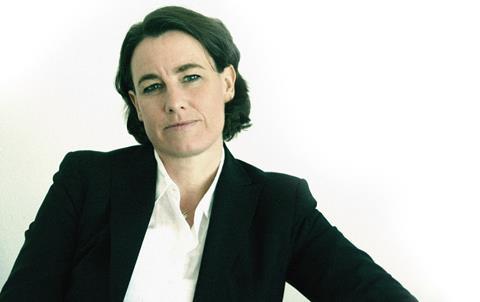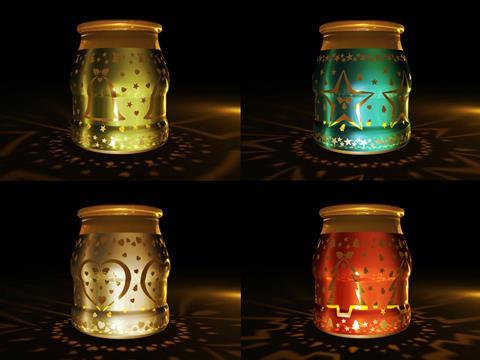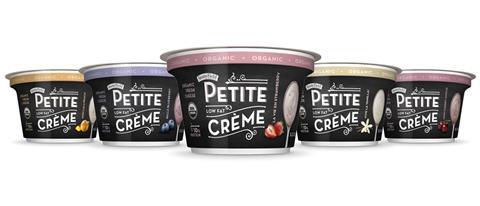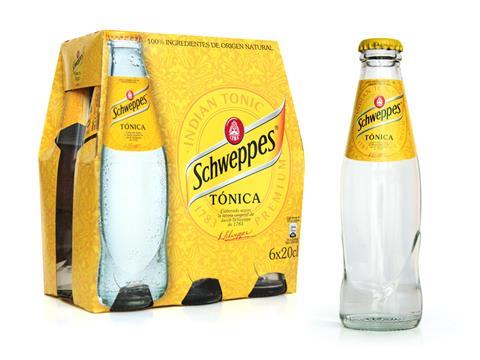
Creative director in the packaging design department of Y&R BCN, one of the world’s leading marketing communications companies, Julie Asschenfeldt has worked on campaigns for global brands such as Danone, Schweppes, Bacardi, Lidl, Beck’s, Kraft, Mont Blanc and Swarowski in the course of a career that has also featured stints at WPP Group and Peter Schmidt. Julie talks to Tim Sykes about designing packaging as part of a wider communication with consumers in a world undergoing digital transformation.
Tim Sykes:
Being part of an agency that handles broader branding and advertising for its clients must have a big effect on the mindset of a packaging designer. How is packaging design integrated into the total activities of Y&R BCN? Does it mean you join the branding conversation earlier than in other organisations – or do you find that the packaging brief comes with restrictions because of the need to complement other dimensions of a campaign? Or a bit of both?!
Julie Asschenfeldt:
You are absolutely right that the mindset of a packaging designer here differs from the one a designer might have in a conventional design studio. We see packaging as one of the tools to create dialogue between brands and consumers – when combined with other communication channels we create synergies that are more potent than each channel alone. All touchpoints should be connected to amplify the brand experience. Experience is nowadays more important than simple shelf impact. And the path to purchase not lineal, purchases are often not pre-planned, journeys are unique, complex. Good design AND good communication will influence the consumers decision making. The silent salesman is sitting on shelf and has only three seconds to seduce. Why not help with a tailor-made communication at ZMOT (Zero Moment of Truth). Using only the channel of packaging is missing opportunities of making connections along the journey.
Aside from this we develop conventional campaigns and underline big ideas with new packaging designs. We think of activations on packaging or we create a new packaging design bearing in mind that we might need to animate the New News in TVC. I don’t feel limited by the mandatory of seeking integrated solutions, I think it enriches the design process. Back when I was working at Peter Schmidt group I used to condescend to advertisers – too loud, not interested in beautiful designs. Now I try to combine the best of both. Being loud and responding to some design standards. People buy a book by its cover – yet not everybody has good taste in design – some just need to be driven to purchase. I consider this kind of seduction as an art.
Tim Sykes:
Could you give an insight into how being exposed to this wider view might have influenced your creative thinking?
Julie Asschenfeldt:
Good packaging will communicate what the consumer can expect from the product and what its brand stands for. Being exposed to a wider view makes me consider more aspects. Perceived high value packaging and quality finishing effects may not always be a good path. If your product is perceived with too high a value, people might not even look at your product because they THINK it is too expensive. Innovative packaging can also carry a concept that positions a brand – as can activations on pack. I also try to find second uses for design or packaging, e.g. glass yoghurt cups with a simple sleeve that can be used as Xmas decoration.

Tim Sykes:
How does the consumer’s engagement with packaging differ from (and how does it complement) their engagement with a brand via other communications channels? Does your understanding of this question inform your design work?
Julie Asschenfeldt:
One hundred per cent of consumers interact with packaging. It connects to the consumer on a physical and individual level. Other channels are far less powerful and get switched off at some point. Packaging stays and lives with the consumer. This is a huge advantage, especially now where the limited attention span of millennials needs to be considered. It puts packaging in the front row of communication. Brands are just starting to see the potential. The time consumers spend with packaging is enormous compared to other media. People from our digital department are happy with three to five ‘spend on their side’. I’d like to see an analysis about the average time packaging interacts with us. Since packaging stays with the consumer it is more important that packaging reflects the product/brand and vice versa. If the product is bad there will be no re-purchase. A beautiful packaging bearing a bad product can only seduce once. For example, Stonyfields Petite Creme was launched in 2014. The design was mentioned in the Herald Tribune, but the product was no success since the French cream cheese texture was not to the US consumers delight.

Tim Sykes:
How do you relate to design on a personal level?
Julie Asschenfeldt:
A good design is a design that raises sales and/or brand equity. If we get a design prize but my client is not making money we have failed our job. I personally try to lavish attention on the details and my designs usually have a reason or a story to tell. When redesigning the Spanish Core Schweppes Range in 2009 we added heritage to the design. The brand is over 200 years old and got big through its Indian Tonic. So we created a pattern that reflected both: Heritage and India. I am still mad that they interchanged that design with some generic white label-ish stripes. Yes – this is quite characteristic for me: I get emotional when it comes to my babies. I also get mad when we deliver perfect artwork and somewhere in the print chain the design alters as on the Schweppes pickup where the pattern is not aligned with the brandblock. Aaargh! Or when we deliver master artwork that needs to be adapted in each country and the local agencies together with the local marketing teams violate the thought through designs.

Talking about me being emotional: in Activia our packaging department was in charge of the global design for 10 years. We lost the latest packaging pitch and sales dropped. Now Danone is back to our colours and similar fruit representation which we had foreseen before the implementation of the new pack. One needs to be careful with mature brands. A drastic change needs to be thought through. Also the I of Activia is not centred as it was for over 10 years. It disturbs my eye when I see it – every time. It also irritates me that some clients rather use six weeks for decision making than conceding reasonable time for perfect design and or artwork execution. Also when working for international clients too many compromises are made. I quote here Gil Horsky (global innovation director at Mondelez), who says: “Packaging design should be a dictatorship.” I absolutely undersign that statement (as long as the dictator has some taste and reason).
Tim Sykes:
In what ways have advances in packaging technology and the emergence of digital printing drawn your work into new directions?
Julie Asschenfeldt:
Advertising is no longer one directional. The critical consumer chooses their own path to purchase. They are more inclined to believe a personal recommendation than conventional brand communication and are sensitive about a broader range of aspects. Is the brand innovative? Does my brand correspond to my standards for social and/or environmental responsibility? Today’s consumer wants to co-create. And brands that don’t consider their consumers’ inputs when creating campaigns are easily out of date. It is a dialog now. Or a ‘multilog’. In general consumers demand more entertainment and they want to be addressed personally. Digital printing is a perfect tool for responding to both. I’ve been absolutely amazed by the innovations that have been developed in the last few years. Embellishments, textiles and in-mould printing…

We are starting to partner with HP Indigo trying to find new creative ways to differentiate brands. In my opinion Jose Gorbea from HP has had a real vision. It was his idea to partner with brands and most importantly with agencies as they are key to creating brand stories out of consumer insights that actually matter to millennials.
I strongly believe digital printing will take over from conventional print very soon. Just think about what happened to conventional photography once digital cameras were invented. Digital printing when combined with creative ideas and marketers with vision has the power to seduce the consumer in ways we have not seen before. And ‘new’ is very much appreciated. The thirst of the consumer for new things is endless. Brands can profit with Earned Media. That is why advances in packaging and printing technologies are always on top of my mind when designing new packaging. It instantly creates the positive emotional response we are seeking in our consumers.
Shelves will change in the near future and constantly. The ‘half-life’ will shorten. Packaging will be more responsive to consumer needs.















